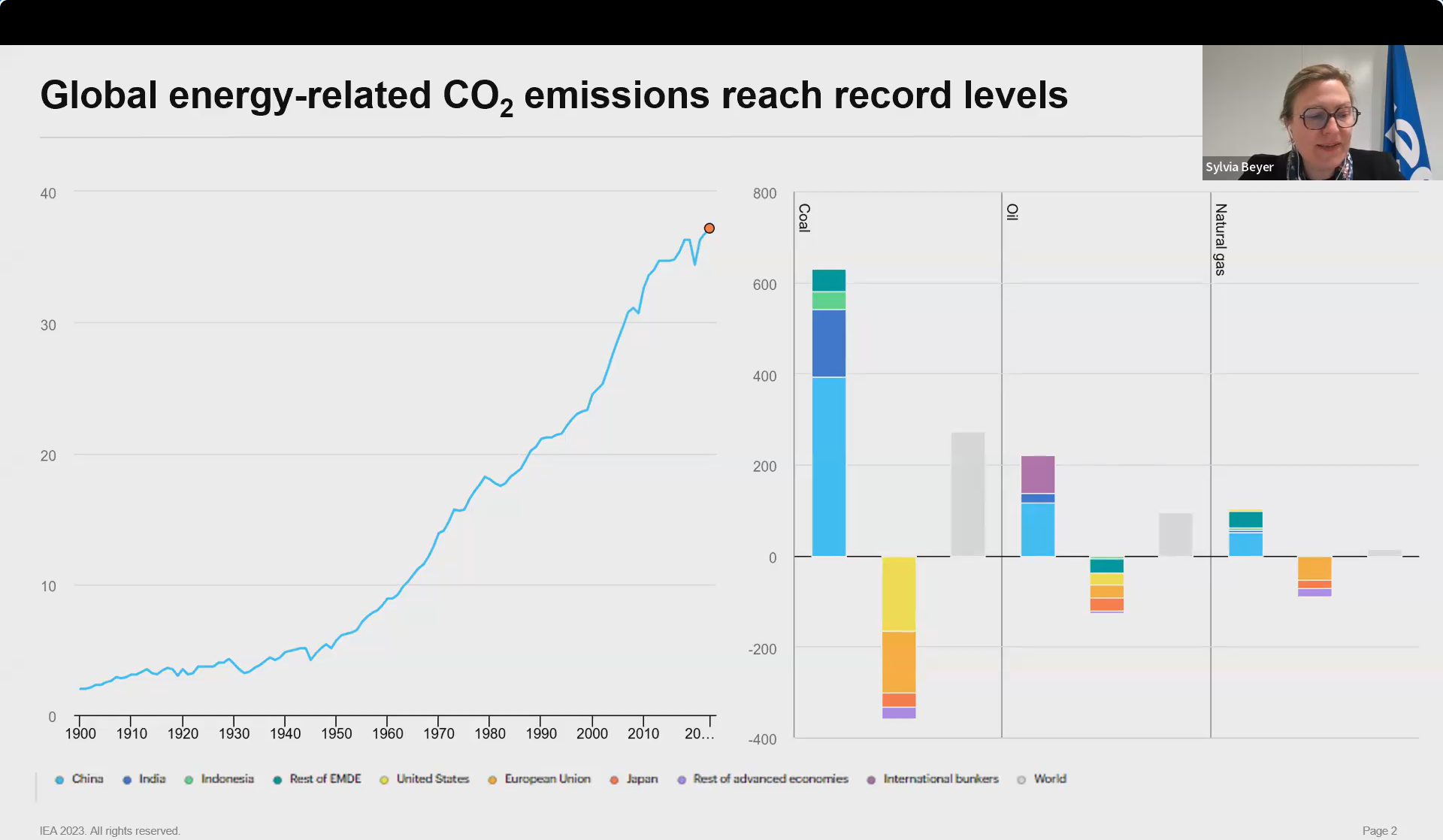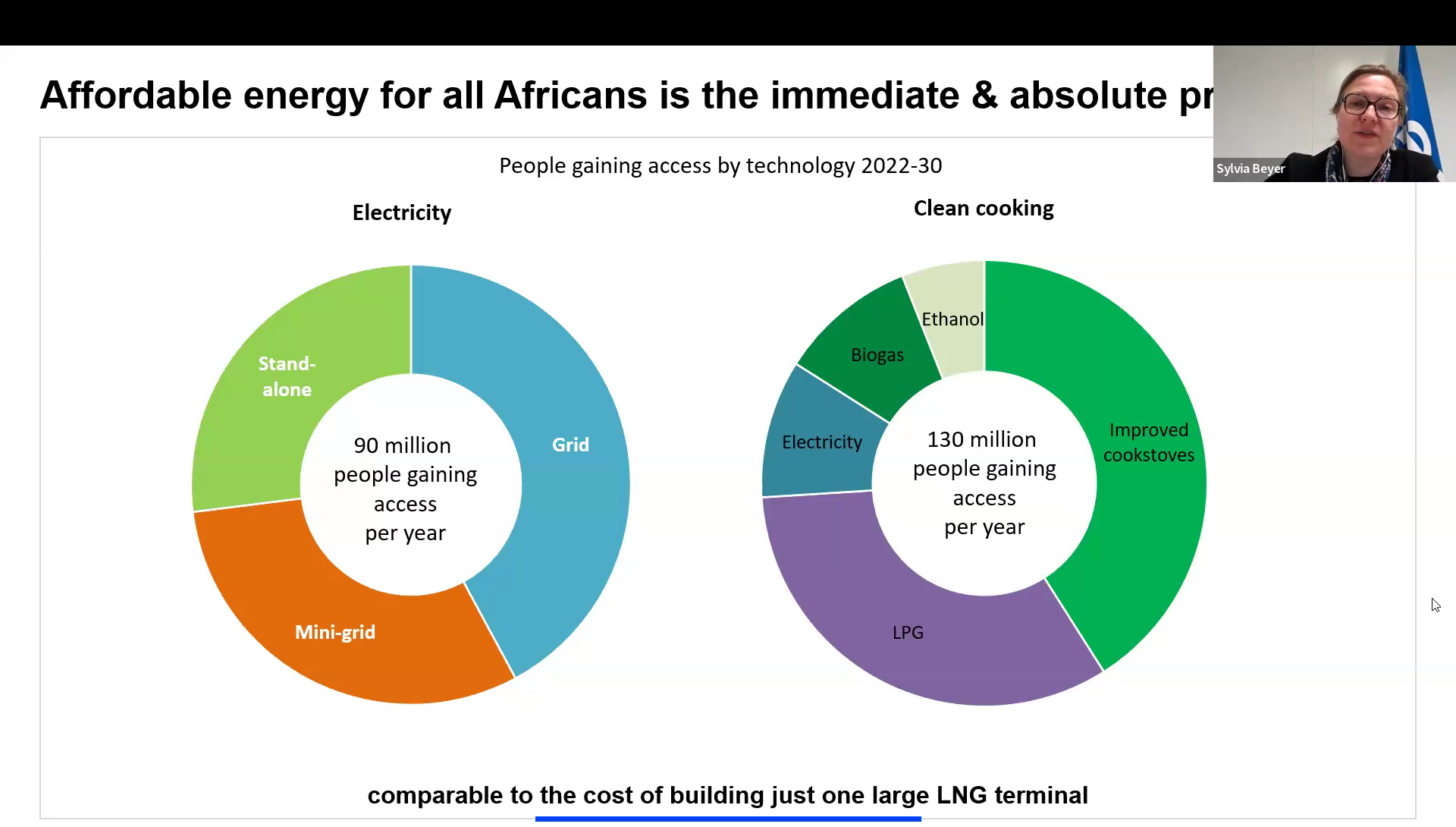Monday, 04 March, 2024
As part of our ‘‘WEC Mondays-Guest Speaker Series’’ we hosted Sylvia Beyer, Senior Energy Analyst, G7/G20 Coordinator (IEA).
In Sylvia’s presentation on ‘‘Overcoming the Energy Trilemma’’, Sylvia highlighted:

- Global energy-related CO2 emissions have reached record levels. Global carbon dioxide emissions from fossil fuels and industry totaled 37.4 billion metric tons in 2023 which is more than a 60% increase compared to 1990 level. Due to unprecedented droughts during 2022-2023 season which drastically decreased global hydroelectricity generation, countries such as China and India were forced to reopen some of their already decommissioned coal power plants for electricity generation. However, advanced economies such as the US, Japan and the EU have seen remarkable CO2 reductions in recent years.
- Global carbon dioxide emissions and total energy demand has started to decouple primarily due to record level increase in clean energy supply. While total global emissions have reached a record high in 2023, annual change from 2022 to 2023 had decreased. In other words, the rate of year-on-year CO2 emissions growth is slowing down.
- In advanced economies, the decoupling of CO2 emissions and economic growth is remarkable. Emissions have fallen back to levels of 50 years ago in G7 countries where GDP has grown more than 3 times.
- Clean energy investment is widening the gap over fossil fuels. Since 2016, clean energy investment has overtaken fossil fuel investment. As of today, for every dollar invested in fossil fuels, about 1.7 dollars are going into clean energy investment, the same ratio was one-to-one five years ago.
- The growth in clean energy investment has been strong, but sadly uneven. There are certainly bright spots in other countries when it comes to clean energy investment, however, more than 90% of the increase in clean energy investment since 2021 has taken place in advanced economies and China. When it comes to clean energy investment, emerging markets and developing economies have 2-3 times higher capital cost than advanced economies due to geopolitical and market uncertainties, less transparency, and lack of strong regulatory framework.
- Unlocking Africa’s energy potential requires more investment. While 20% of the global population lives in Africa, Africa only receives 2% of global clean energy investment. Today, there are 600 million Africans without access to electricity, almost all in sub-Saharan Africa. To reach universal access to electricity by 2030 90 million people would need to gain access each year on average from 2022. Achieving full access to modern energy in Africa by 2030 would require investment of USD 25 billion per year.

- Clean energy technologies will accelerate the needs for critical minerals/metals. Critical minerals availability will pace the transition and requirements for 1.5 DC aligned clean energy technology development. Diversification of supply and security of supply for critical minerals will drive the energy transition. As a result, countries should prioritize policies regarding recycling and reuse of critical minerals in order to build resilience in this highly concentrated supply/refinery chain.
- The historic agreement was signed at COP28. Energy transition is no longer a national agenda anymore. At COP 28, global policy makers agreed to triple renewable capacity and double energy efficiency by 2030. Secondly, for the first time in history, there is a global consensus on Net-Zero Energy System which will be achieved by employing strictly low-carbon energy sources and electrification.
- Tripling of RE capacity by 2030 is within reach but more effort is needed. Massive renewables capacity growth is led by steadily cheaper solar PV, while wind and hydropower’s accelerated expansion is challenged by permitting, financing and social acceptance issues.
- Whether it is Tripling of RE capacity by 2030 or doubling the energy efficiency, Challenges remain for governments to achieve it consistently for the rest of the decade. Although the COP28 target is a global one, each country should take strong and immediate measures to build their own pathways to the global target given their different national, economic, and geographical contexts.
